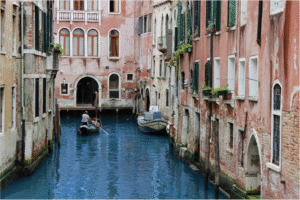
A Guide to Italian Dialects: Understanding Italy’s Regional Languages and How They’re Used Today
Italy is famous for its food, art, and beautiful landscapes—but it’s just as famous for something else: its incredible diversity of dialects. Travel from Milan to Naples or from Venice to Palermo, and you’ll hear Italian spoken in ways that sound almost like different languages. That’s because, in many cases, they are.
Whether you’re learning Italian for travel, school, heritage, or business, understanding Italian dialects can help you communicate more naturally—and connect more deeply—with locals across the country.
In this guide, we’ll explore the most widely spoken regional languages of Italy, explain how they differ from Standard Italian, and share examples to help you hear the contrast for yourself.
What Is “Standard Italian”?
Before diving into dialects, it’s important to understand what Italians mean by “Italian.”
Standard Italian (Italiano standard) is the official language of Italy, based on the Tuscan dialect, specifically the variety used in Florence. Thanks to writers like Dante Alighieri, Petrarch, and Boccaccio, Tuscan became the foundation of Italy’s modern literary and national language.
Today, Standard Italian is used in:
-
schools and universities
-
government, news, and media
-
textbooks and formal writing
-
communication between people from different regions
But while everyone in Italy speaks Standard Italian, many Italians still use local dialects at home, socially, or within their communities—making Italy one of the most linguistically rich countries in Europe.
How Many Italian Dialects Are There?
Linguists estimate over 30 major dialect groups exist in Italy, many of which are different enough to be considered separate Romance languages, not merely variations of Italian.
This linguistic diversity reflects Italy’s long history of city-states, foreign influence, migration, and cultural separation before unification in 1861.
Where Are Italian Dialects Spoken?
Italian dialects can be found in every region of the country, including:
-
Sicily
-
Sardinia
-
Veneto
-
Lombardy
-
Campania
-
Friuli–Venezia Giulia
-
Piedmont
-
Tuscany
-
Lazio
Some dialects also extend into parts of Switzerland, Slovenia, and Croatia, and into communities in the U.S., Argentina, and Australia due to migration.
The Most Important Italian Dialects (With Examples)
Below are some of the most widely spoken and culturally significant Italian dialects/languages today.
1. Sicilian (Siciliano)
Sicilian is not just a dialect—it’s considered a distinct Romance language with influences from Greek, Arabic, Catalan, Spanish, and Norman French. It’s spoken by more than 5 million people on the island of Sicily.
Sicilian Examples:
| English | Standard Italian | Sicilian |
|---|---|---|
| Hello | Ciao | Salutamu |
| How are you? | Come stai? | Comu si? |
| Thank you | Grazie | Grazij |
| See you later | A dopo | Ni videmu |
🟢 Fun Fact: Sicilian poetry played a key role in the development of Italian literature long before Tuscan became standard.
2. Venetian (Veneto or Venesian)
Spoken in Venice, Verona, Padua, and surrounding areas, Venetian has more than 2 million speakers and a long literary history dating back to the 1200s.
Venetian Examples:
| English | Standard Italian | Venetian |
|---|---|---|
| How are you? | Come stai? | Como xela? |
| Good morning | Buongiorno | Bonu jornu |
| Please | Per favore | Par piaser |
| What’s your name? | Come ti chiami? | Che nòme gatu? |
🟢 Fun Fact: Venetian was once the administrative language of the Republic of Venice, a major European power for centuries.
3. Sardinian (Sardu)
Sardinian is one of the most linguistically distinct Romance languages and is considered the closest modern language to Latin. It has over 1 million speakers across Sardinia.
Sardinian Examples:
| English | Italian | Sardinian |
|---|---|---|
| How are you? | Come stai? | Cumènti stas? |
| My name is… | Mi chiamo… | Mi tzerriu… |
| I’m fine | Sto bene | Deu seu béni |
| That’s life | Così è la vita | Cussì est sa vida |
🟢 Fun Fact: Sardinia has multiple sub-dialects, including Logudorese and Campidanese, which can be difficult for each other to understand.

4. Lombard (Lombardo)
Lombard is spoken across northern Italy, especially around Milan, Como, Bergamo, and Varese. It has around 3 million speakers and varies widely from town to town.
Lombard Examples:
| English | Italian | Lombard |
|---|---|---|
| How are you? | Come va? | Coma la va? |
| Good night | Buonanotte | Bona noeucc! |
| My name is… | Mi chiamo… | El mè nom a l’è… |
| It’s a magical place | È un posto magico | A l’è un sit majeg |
🟢 Fun Fact: Lombard has noticeable similarities to French and Occitan due to northern Italy’s historical links.
5. Neapolitan (Napoletano)
Neapolitan, spoken in Naples and much of southern Italy, is one of the most widely recognized and influential Italian dialects—especially through music and film.
Neapolitan Examples:
| English | Italian | Neapolitan |
|---|---|---|
| What are you doing? | Che fai? | Che staje facenno? |
| I love you | Ti amo | T’aggio voluto bene |
| Let’s eat! | Mangiamo! | Jamme magnà! |
| Beautiful! | Bello! | Bell’! |
🟢 Fun Fact: Neapolitan was the language of the Kingdom of Naples and remains deeply tied to opera, theater, and Italian pop culture.
6. Friulian (Friulano)
Spoken in northeastern Italy near the borders of Austria and Slovenia, Friulian has around 600,000 speakers and is officially protected as a minority language.
Friulian Examples:
| English | Italian | Friulian |
|---|---|---|
| What’s your name? | Come ti chiami? | Ce non âstu? |
| My name is… | Mi chiamo… | Il gno non al è… |
| Where are you from? | Di dove sei? | Di dulà sêstu? |
| Pleased to meet you | Piacere di conoscerti | Plasê di cognossiti |
🟢 Fun Fact: Friulian borrows vocabulary from German and Slovenian due to its border location.
Why Do Italian Dialects Matter for Learners?
Understanding dialects can help you:
-
navigate regional travel more confidently
-
understand locals and cultural nuance
-
avoid confusion when hearing slang or fast speech
-
appreciate Italy’s unique linguistic history
-
connect with heritage or family roots
Many travelers are surprised to learn how different Italian sounds from region to region—especially outside major cities. Knowing a few dialect words can make interactions warmer and more authentic.
Learn Italian Online—Dialect Exposure Included
At LanguageBird, you’ll learn Standard Italian first, then explore regional variations like Sicilian, Neapolitan, Venetian, or Romanesco depending on your interests.
Our native-level Italian instructors bring real culture, real accents, and real-world communication to every lesson—so you learn the Italian people actually speak.
Ready to start your Italian journey?
Learn more about LanguageBird’s accredited 1:1 online Italian programs.



